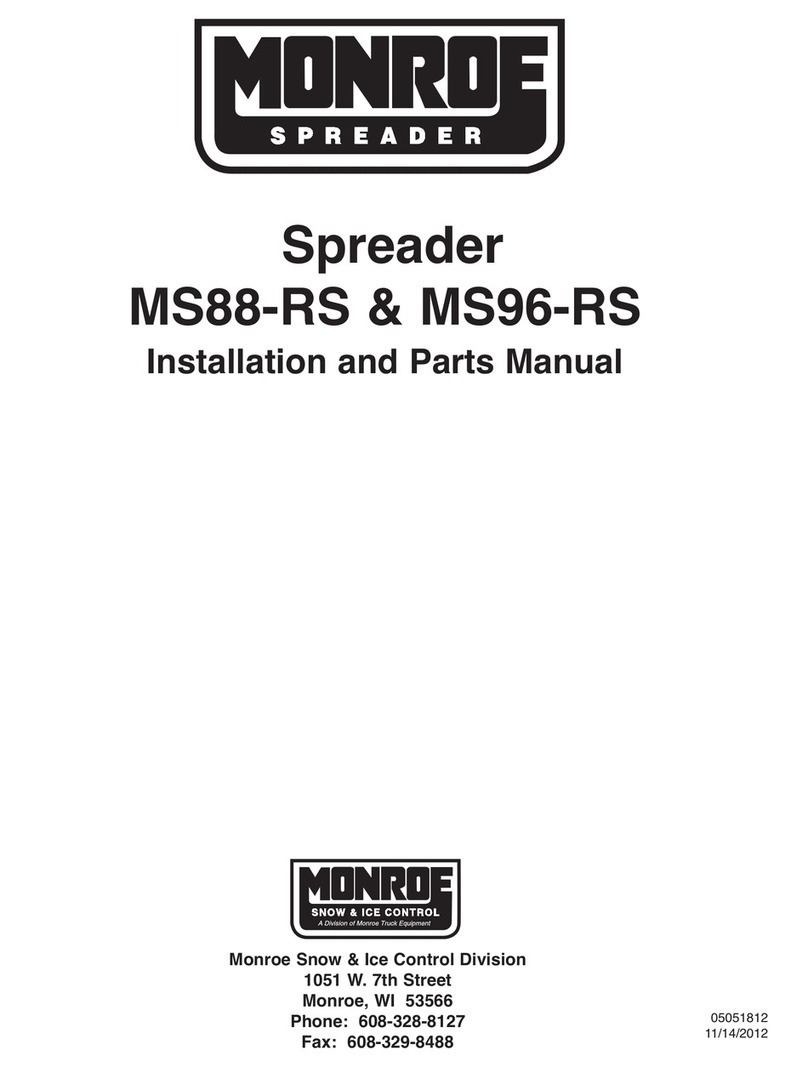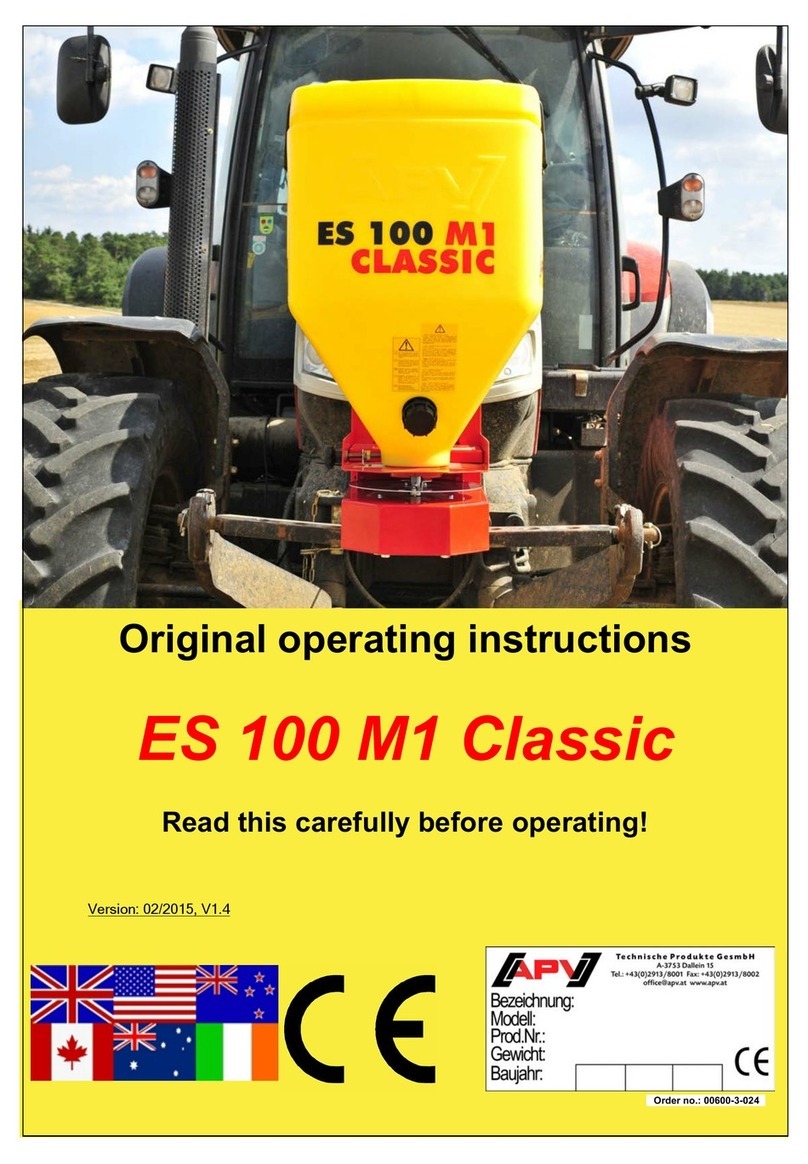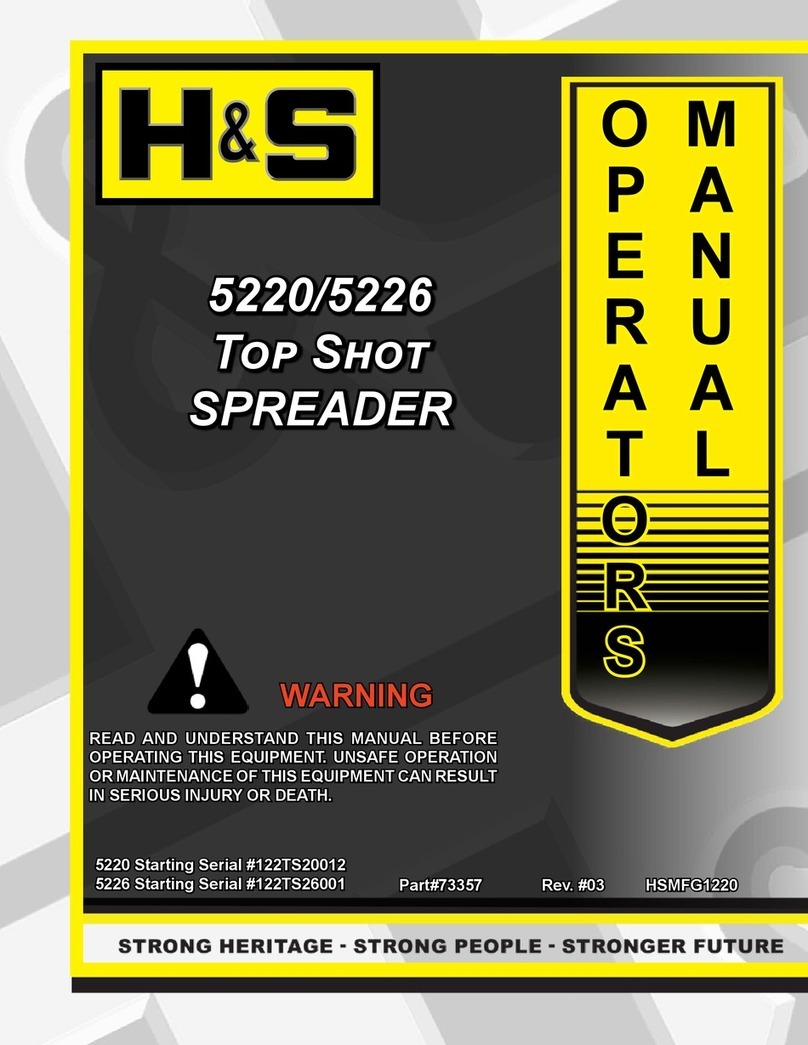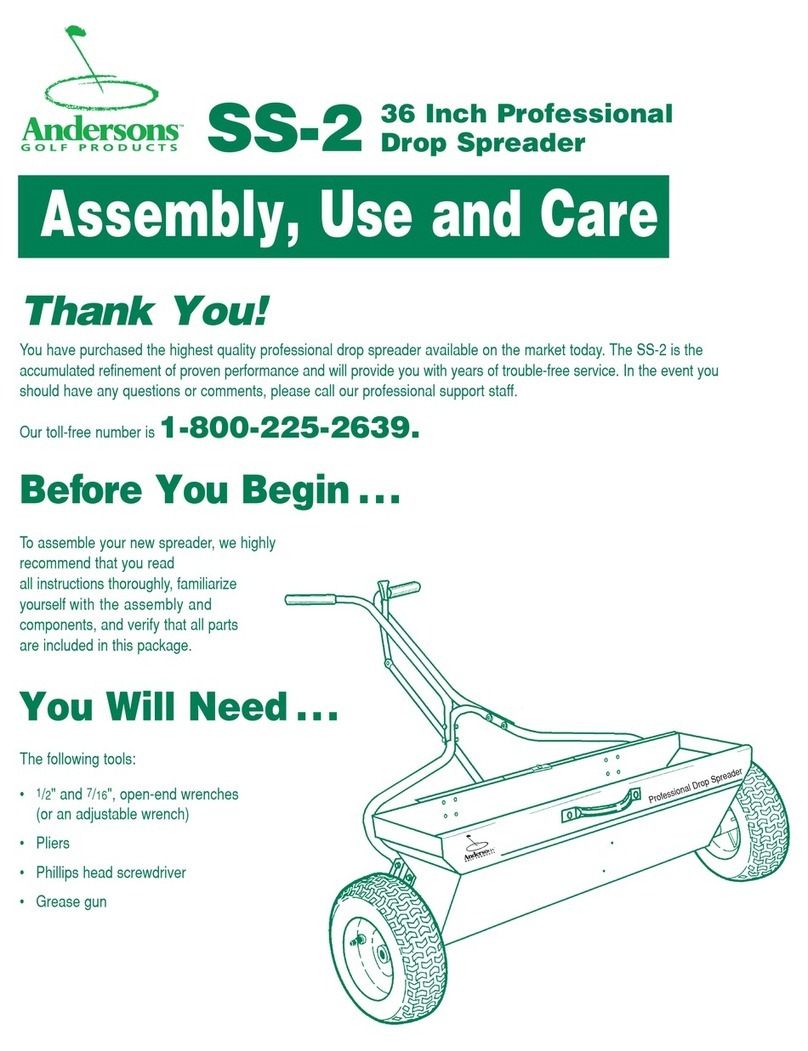
In Season
Threaded Fasteners
• Re-torque all fasteners after the first 8 hours of use.
• Check for loose, damaged, and missing fasteners before each use.
• Inspect and re-torque all fasteners at the beginning of each snow season.
Grease Lubrication
• Lubricate grease fittings every 10 hours during normal use and more often during heavy use
(does not apply to sealed bearings).
• Do not over-grease sealed bearings. Grease should not be pushed out past the seals on these
bearings. Refer to the greasing chart for sealed bearings.
Hydraulic System
• Tighten all hydraulic fittings after the first 8 hours of use.
• Inspect hydraulic fittings for leaks every week and tighten as required. If a hydraulic fitting
continues to leak after being tightened, replace the fitting as soon as possible.
• Maintain the hydraulic oil level at the upper black line on the reservoir sight gauge or two inches
below top of tank if there is no sight gauge. Use a high-grade, non-foaming hydraulic oil. Do
not mix different types and grades of hydraulic oil.
• Keep dirt and other contaminants out of the reservoir. Pour oil through filter or screen when
adding oil. Never operate the system with the filler cap not installed.
• Change the hydraulic oil annually or more often if it appears milky or discolored, or if it smells
burned. If the oil needs to be changed frequently, investigate for a source of contamination or
system overheating.
• Change the oil filter after the first 50 hours of operation, and then every 6 months or when the
pressure differential gauge indicates the filter is plugging.
• When quick-disconnects are separated, cover and cap the ends to prevent the entry of
contaminants into the hydraulic system and possible impact damage to the ends.
• Inspect the hydraulic hoses for wear or damage every month, especially hoses attached to moving
components.
Spreader Auger & Drive
• If the spreader auger has a chain drive, lubricate the chain lightly with oil either weekly or monthly,
depending on frequency of use.
• The slack on a drive chain must be checked after the first 8 continuous hours of operation and
then weekly during the in-service period. If the chain is loose, loosen the motor mounting plate
and rotate it until chain slack is removed. Position the motor by hand to avoid over-tightening the
chain—do not pry on the motor with a bar or other tool.
7
Maintenance Instructions Rev. 12/18/12
Before working under the ehicle or around the spreader, shut off the truck en-
gine and remo e the key from the ignition. Pre ent accidental startup and oper-
ation of the spreader to a oid personal injury!
Keep body parts away from the auger when it is turning. Ne er try to clear
jammed material with the auger turning. Ne er try to manually feed material
into the turning auger. Hands, feet, hair, and clothing can become entangled in
mo ing parts causing death or se ere injury.





























